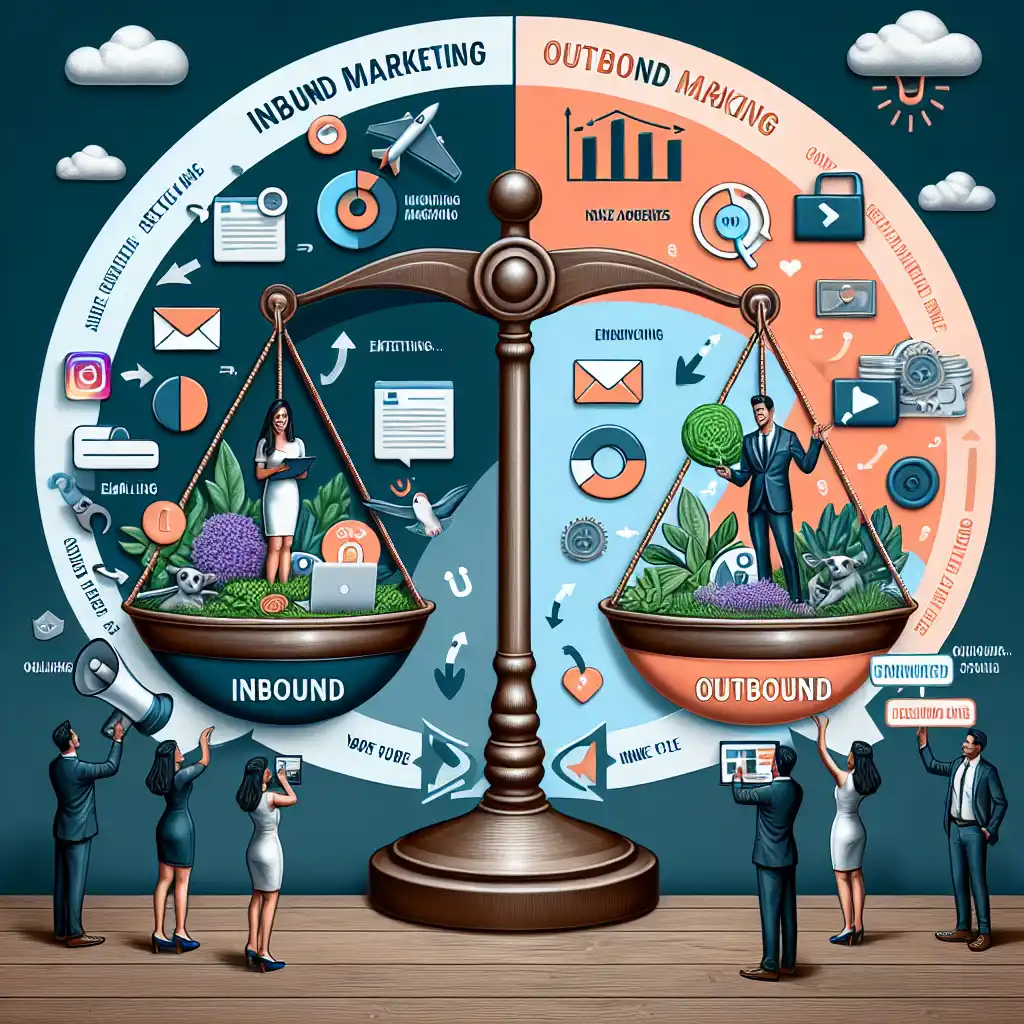
When it comes to driving growth and attracting customers, understanding the differences between inbound vs outbound marketing is crucial. In this post, you’ll learn what sets these two strategies apart and how each can benefit your business, helping you make an informed decision.
What is Inbound Marketing?
Inbound marketing attracts customers by creating valuable content and experiences tailored to them.
This approach focuses on solving problems or answering questions your target audience is already searching for. By offering relevant and helpful information, inbound marketing draws customers in naturally.
To draw in customers naturally, this strategy includes methods like:
- Content Marketing: Blogs, videos, eBooks, and other forms of content that provide value and engage your audience.
- SEO (Search Engine Optimization): Optimizing your content and website to rank higher in search engine results, making it easier for potential customers to find you.
- Social Media Marketing: Sharing content and engaging with users on platforms like Facebook, Twitter, and Instagram to build relationships and foster community.
- Email Marketing: Sending targeted emails to nurture leads, provide valuable information, and keep your brand top-of-mind.
Inbound marketing is about earning the customer’s attention rather than buying it. It builds trust and long-term relationships with your audience, making them more likely to become loyal customers.
What is Outbound Marketing?
Outbound marketing involves reaching out to potential customers, often through interruptive methods.
This strategy pushes a message to a broad audience in hopes of catching their interest. Outbound marketing is more traditional and focuses on casting a wide net to attract potential customers.
Common tactics include:
- TV and Radio Ads: Broadcasting your message to a wide audience through traditional media channels.
- Cold Calling: Reaching out directly to potential customers over the phone to introduce your products or services.
- Direct Mail: Sending physical mail to potential customers, such as postcards, flyers, or catalogs.
- Online Display Ads: Using banner ads or pop-ups on websites to capture the attention of internet users.
Outbound marketing relies on traditional advertising methods and often requires a larger budget. While it can quickly generate leads, it may feel intrusive to potential customers.
3 Key Differences Between Inbound vs Outbound Marketing
Understanding the core differences between inbound and outbound marketing can help you choose the right strategy for your business.
- Approach: Inbound marketing attracts customers with valuable content and experiences, whereas outbound marketing pushes messages to potential customers, often interrupting their activities.
- Cost: Inbound marketing generally costs less over time and provides a higher ROI by building relationships and loyalty. Outbound marketing can be more expensive, requiring significant upfront investment in advertising and media space.
- Targeting: Inbound marketing targets specific audiences who are already interested in your industry or offerings. Outbound marketing casts a wider net, targeting broad audiences, some of whom may not be interested in your product or service.
Choosing the right marketing strategy depends on your business goals, target audience, and budget.
When to Use Inbound Marketing
Consider focusing on inbound marketing if your business goals align with building strong customer relationships and attracting targeted leads.
- You want to build long-term relationships with your customers by providing valuable, informative content that addresses their needs and interests.
- You aim to attract a targeted audience already interested in your industry or products. Inbound marketing helps you reach people actively searching for solutions you offer.
- You prefer organic growth and sustainable marketing efforts.
Inbound marketing helps you develop a loyal customer base over time, leading to repeat business and referrals.
Inbound marketing is ideal for businesses focused on long-term growth and customer loyalty, providing a steady stream of leads who are already interested in what you have to offer.
When to Use Outbound Marketing
Outbound marketing may be the right choice if your business needs to make a big impact quickly or reach a broader audience.
- You need immediate brand awareness or are planning a product launch. Outbound marketing can rapidly increase your visibility and get your message out to a large audience.
- Your business thrives on broad audience reach and quick lead generation. Outbound tactics like TV ads or direct mail can bring in leads quickly and efficiently.
- You have the budget to invest in advertising and promotional campaigns. Outbound marketing often requires significant upfront investment, but it can pay off by generating quick results.
Outbound marketing can be a powerful tool when you need to capture attention quickly and drive immediate action.
Summary: Inbound vs. Outbound Marketing—Find Your Balance
Understanding the differences between inbound and outbound marketing is essential for making informed decisions about your marketing strategy. Both approaches have unique strengths and can be highly effective when used correctly. By knowing when and how to use them, you can create a marketing plan that attracts customers, builds relationships, and drives growth for your business
